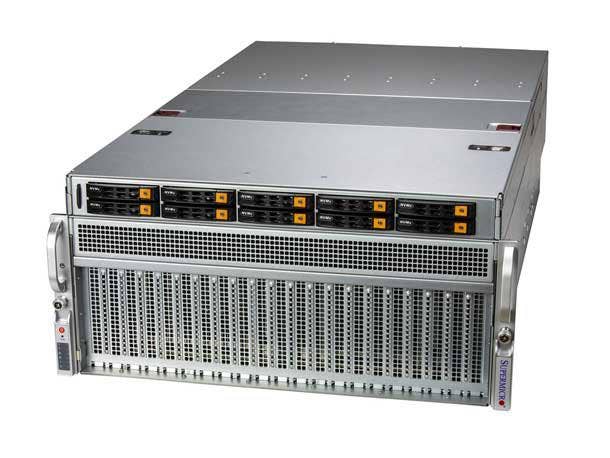Supermicro Launches Universal GPU System To Boost IT Flexibility
Supermicro says its new system’s modular design will allow for unlimited upgrading without the need to replace entire systems, providing a more supply chain-conscious option for IT administrators.

San Jose, Calif.-based Super Micro Computer Monday unveiled the launch of a new universal system designed to simplify large-scale GPU deployments with room for adding future technologies—something that could allow customers to get the most out of technology gear limited by a supply chain crisis.
The modular Universal GPU system architecture supports multiple GPU form factors, CPU choices, storage and networking options, allowing many different configurations within the same box. The company said systems can be optimized for artificial intelligence, machine learning and high-performance computing applications.
Josh Grossman, Supemicro’s principal product manager, said the Universal GPU System is an important step for the company. “Supermicro has always had a real commitment to modularity,” he said. “It’s always been a design goal from the beginning when we were first entering the channel. It’s a solution that allows the creation of a whole ecosystem with a variety of different GPUs being mixed and matched with a variety of different processor technologies.”
Grossman said the goal of the new product is to make things easier for IT administrators and to cut some overhead. “What we’re doing is basically providing two platforms that you can then mix and match with a variety of different GPUs. It makes for a world in which you can standardize on one or two platforms within the same family. It’s just a radical simplification of their supply chain and it makes everything easier—from maintenance to working with their customers to placing orders. That supply chain rationalization results in money back in their pockets.”
Phil Stead, vice president of solutions at edge computing solution provider Reliant, said the Tallahassee, Fla.-based company will deploy the Universal GPU to help with systems that handle quality control, workforce management, visual merchandising and cashier-less checkout technologies. “Since these intensive new applications require a TPU/GPC configuration, this translates to a hardware procurement expense,” he said. “We believe the Supermicro Universal GPU system and general approach aligns perfectly to deliver just the right amount of compute to deliver these next-gen apps. This is especially important across the cost-conscious vertical markets we serve—retail, hospitality, c-store [convenience store] and unmanned operations.”
Supermicro has operations in the U.S. and in Taiwan. “With manufacturing all over the world, wherever the costumer has that need, we can meet that need,” Stead said.
The systems are described as “data center-class” and will come in 4U or 5U sizes. The modular setup will allow mixing and matching that may save companies money, allowing for CPU and GPU upgrades without changing out entire systems.
“Supermicro’s Universal GPU Server is a breakthrough for our industry and data center infrastructure,” Charles Liang, president and CEO of Supermicro, said in a statement. “With a single, powerful, modular and future-proof platform, we have changed the ground rules for how CTOs and IT administrators can plan for new deployments.”
The first Universal GPU platforms to ship will be powered by third-generation AMD EPYC 7003 processors with either MI250 GPUs or Nvidia’s HGX A114-GPU. In April, the company will begin shipping units powered by third-generation Intel Xeon Scalable processors with the same Nvidia GPU. These systems, the company said, were designed with an improved thermal capacity to accommodate up to 700W GPUs.
Grossman said Supermicro already has large orders for the new system. “We’re seeing success in the marketplace,” he said. “We’re excited about it. It’s an interesting evolution for the Supermicro platform.”
Kent Tibbils, vice president of marketing at Campbell, Calif.-based solution provider ASI, said the modular design of the new platform will be attractive to channel partners. “Supermicro’s ability to design a customizable solution is key to channel partners to be able to leverage different technology,” he said. “Being able to deliver the latest technology is hard to do with a server so the modular design is really interesting and gives you more customization options to be able to compete at higher levels.”